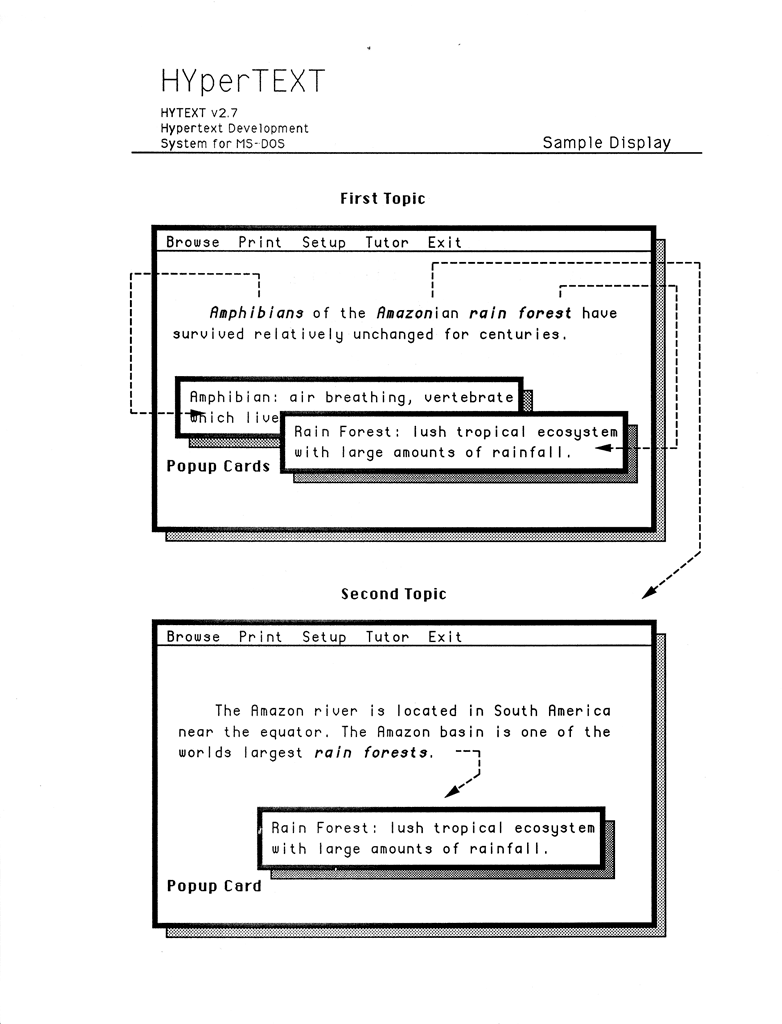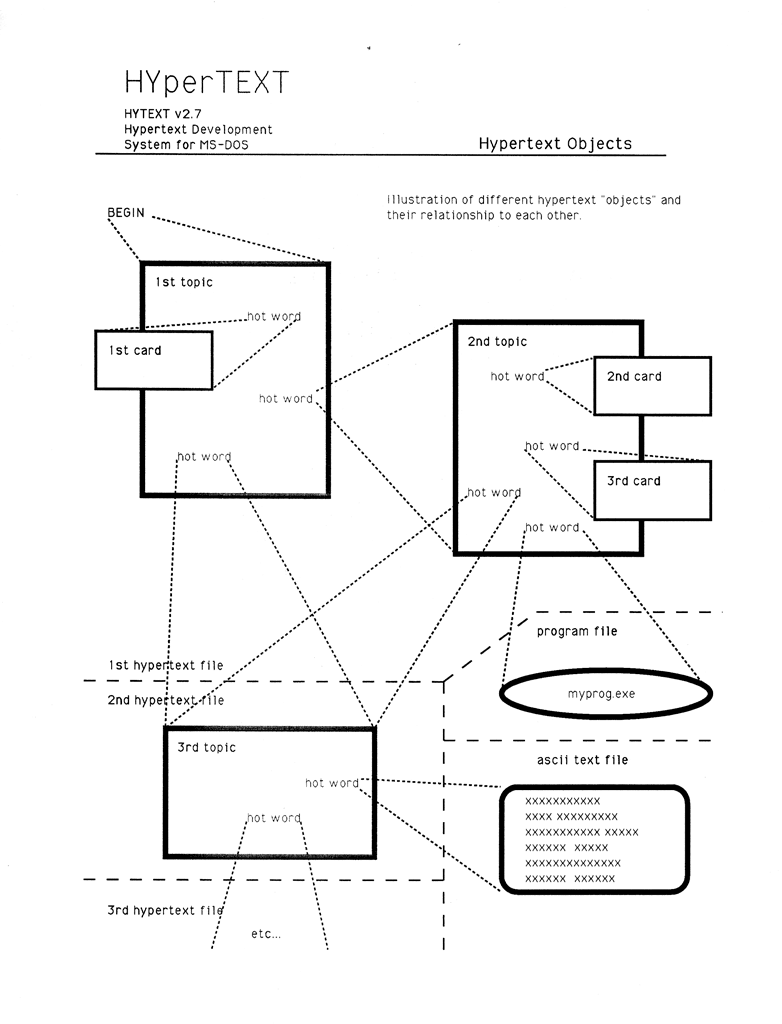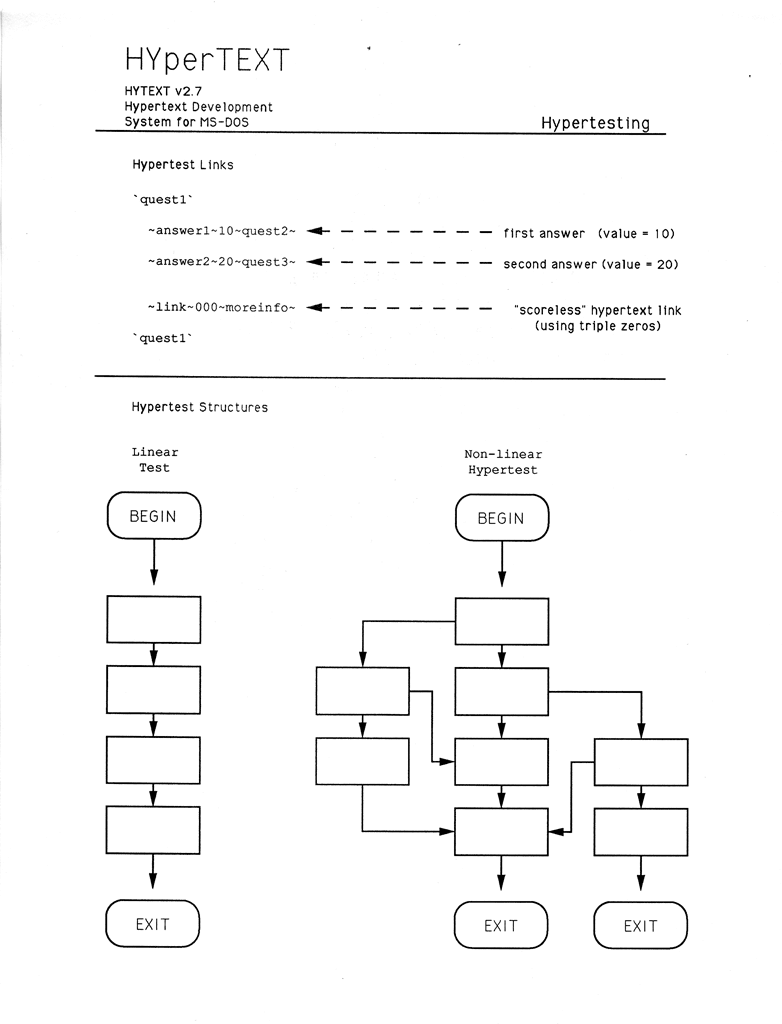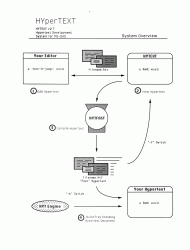When I was a resident in 1988 I wrote a bit of software called HYTEXT—a hypertext publishing system for MS-DOS computers. I knew nothing about networks at the time, but I did create a mark-up language that anticipates HTML in many ways. I recently came across a paper copy of my original documentation and thought it would be a good idea to reproduce a few pages here for posterity. The original program and documentation are on 5.25 inch floppy discs that I have no way to read. But I googled it and found my 22 year old file online! So the circle is complete.
Here is my representation of two “web pages” displayed on a 80 column by 24 line (!) monochrome display…
I called these pages “Topics” and you could scroll them 12 lines at a time using the Page Up and Page Down keys. You navigated the links using the arrow keys and pressing Enter. This is very similar to text-only browsers still in use today (such as Lynx). In addition there were two means of showing additional information without jumping to another topic. Popup Cards contained brief annotations and definitions, very similar to the “hover box” commonly used on Web pages today. Expansion Text allowed the author to hide lines of text that would only appear if the user pressed a special key. Again this technique is frequently used on Websites to compress content for easier scanning/browsing. Here is a conceptual diagram of how it worked…
Notice the hooks for external files and programs. The next version added direct calls to the OS for directory listing, etc. The complete package came with a runtime module and could produce stand-alone hypertext books.
Finally, I coined the concept of “Hypertesting” by assigning weights to each link and controlling backward navigation…
Here are a few other selected pages of original documentation…
And links to two hypertext documents I created: hytdoc.htx and msdos.htx







